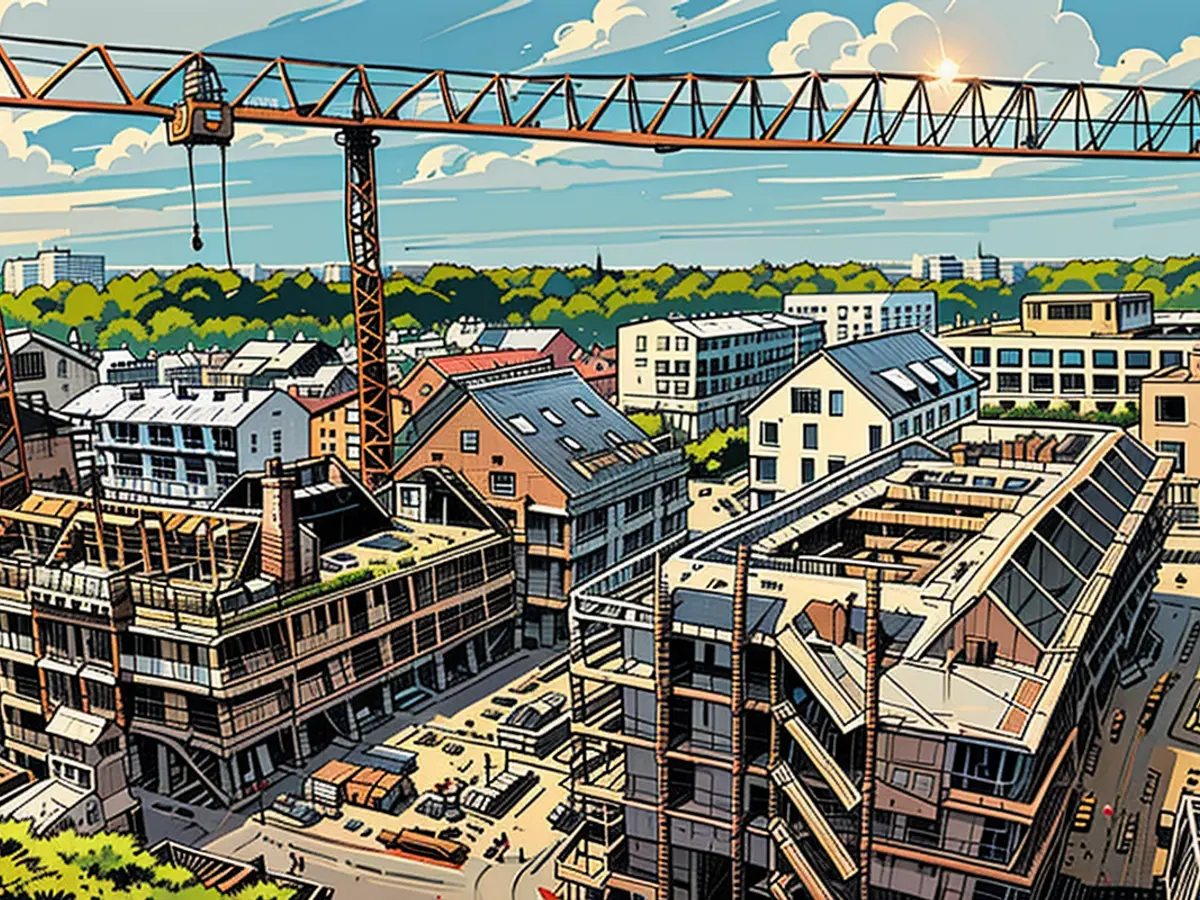IFO: In the year 2026, only 175,000 new dwellings
The Ampel Coalition fails to meet their promise of building 400,000 new dwellings annually. According to economic researchers, as of 2026, only 175,000 new dwellings are expected to be built each year, which is over 40% less than the nearly 300,000 dwellings built in 2022. "The forecast is subject to uncertainties, but it's quite clear that we will slip below the 200,000 mark by 2026 at the latest," explained IFO construction expert Ludwig Dorffmeister.
The goal of 400,000 new dwellings per year, which was set by the Berlin Coalition upon taking office in 2021, is clearly receding. IFO expert Dorffmeister expects no significant improvement in the coming two years for the construction and housing industry. "Overall, I have little hope for a major turnaround," he said.
Building is expected to become even more expensive
The problem is not limited to Germany. According to the Munich economists, the number of new housing starts in the 15 western European countries is expected to decrease from over 1.5 million per year to 1.2 million.
"The housing market is currently experiencing the negative consequences of high inflation and interest rate hikes, just like in other European countries," Dorffmeister said. "However, in Germany, construction costs have completely lost control and are preventing the market from recovering. Long-term, interest rates should not serve as an excuse for weak construction activity, as they are now back on a normal level."
According to Dorffmeister's assessment, construction costs are expected to rise further in the coming years: "The construction cost index of the Statistical Federal Office shows that formerly rising material costs are not decreasing but rather stabilizing, while labor costs are making significant strides backward." The collective bargaining agreement for the construction industry is expected to result in additional cost increases in the coming years.
Building applications are declining - "A never-ending tragedy"
A significant factor in the forecast is the decline in building applications and housing permits. In May, according to Statistics Office data, only 17,800 building applications were approved, which is almost 44% less than in May 2022. Many housing cooperatives and municipal companies have put new projects on hold due to soaring construction costs.
One of the main reasons for this is that companies outside urban areas must demand very high rents far above the local average for the buildings to be profitable and pay off within the usual timeframe of 25 to 30 years.
The Housing Industry Association (GdW) recently lamented a "never-ending tragedy" in the housing market. "From a political standpoint, not enough is happening to counteract this," said GdW President Axel Gedaschko. The missing building permits of today are the "non-existent building completions of the future." The association represents primarily the interests of housing cooperatives and municipal companies, which usually rent their apartments more affordably than private societies. According to a recent GdW survey of these member organizations, two-thirds cannot build new apartments this year.
For renters, an unfortunate situation
The housing industry is facing major challenges, and the situation is particularly unfavorable for renters. The lack of affordable housing is a pressing issue, and the situation is expected to worsen in the coming years. The high construction costs and the resulting decline in new housing starts are contributing to this trend. The housing industry and the government must work together to find solutions to address this issue and ensure that everyone has access to affordable housing.
The expected development of rents is not part of the Ifo-Forecast, but the numbers do not bode well for apartment seekers. In large cities like Munich, the peculiar phenomenon has been observed for a long time that property prices are falling, but rents continue to rise due to housing shortages.
The employer-oriented Economic Research Institute IW in Cologne also sees a much higher demand for housing than can be foreseen being built. The Institute estimates the annual new construction requirement up to 2025 at 372,000 housing units, and for the years after 2030 at 302,000 units per year. Those who plan to move or have to move in urban regions in the coming years should prepare themselves for a strenuous search and high costs.
I anticipate that construction costs will continue to rise in the coming years, as indicated by the Statistical Federal Office's construction cost index. This trend, coupled with increases due to the collective bargaining agreement for the construction industry, might make housing construction even more expensive.
In light of the soaring construction costs, many housing cooperatives and municipal companies have decided to put new projects on hold, leading to a decline in building applications and housing permits. As a result, the goal of building 400,000 new dwellings annually, as set by the Berlin Coalition, appears increasingly unattainable.
If the situation persists, it might affect renters negatively. The lack of affordable housing is a pressing issue, and the situation is expected to worsen if the high construction costs and the resulting decline in new housing starts continue.








